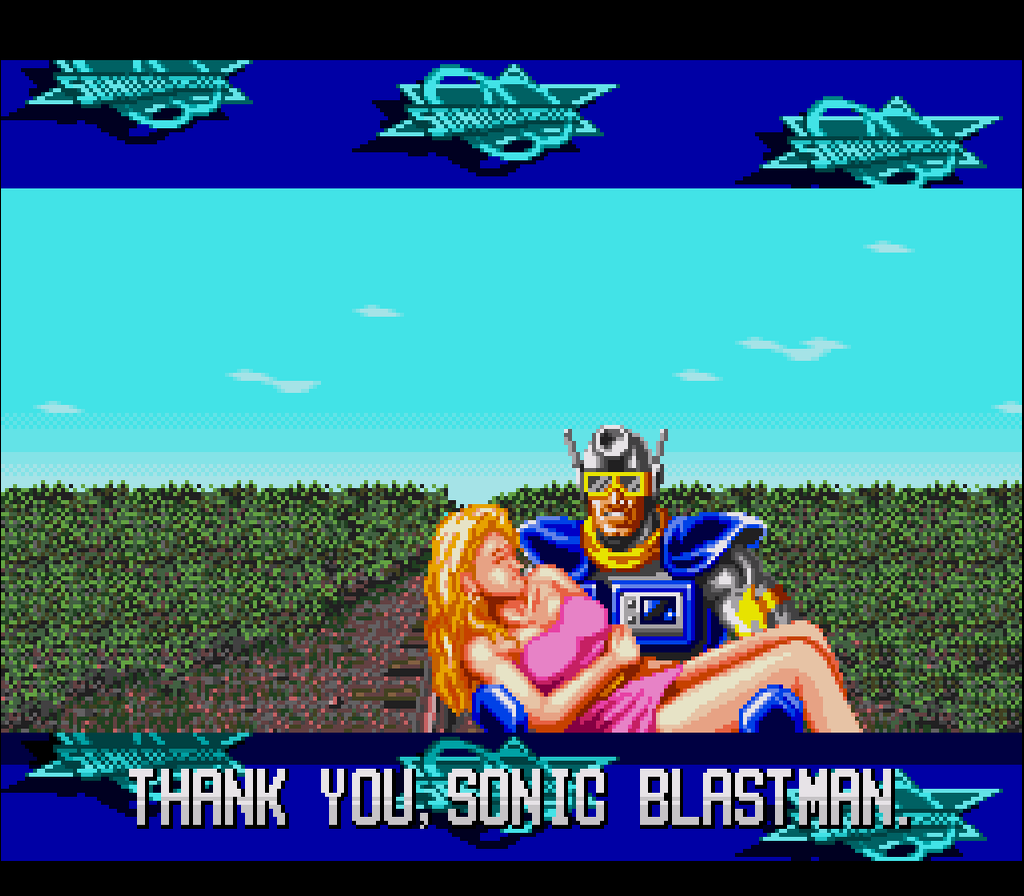

The game was called Real Puncher 2 outside of Japan.The music for both games rocks, as while we got some remixes for Sonic 1, Sonic 2 is entirely new tracks with one notable exception.īoth of these games have amazing music and they stand alongside the other iconic tracks from the Classic Era. Taito revealed another sequel titled Sonic Blast Heroes at the AOU 2010 conference in February it was planned to hit arcades at the end of that month. Sonic Blast Man also made a few appearances in other games as a guest character, such as Puzzle Bobble 3 (released on consoles as Bust-A-Move 3 in America and Europe). The SNES sequel, entitled Sonic Blast Man II, plays similarly to its predecessor, as well, and adds more options, such as new playable characters "Sonia" and "Captain Choyear," two-player modes, and others. In the United States, Sonic Blastman was the highest-grossing novelty arcade game on the RePlay redemption charts in February 1995. Outside of Japan, the game was released as a ticket redemption game. The arcade sequel entitled Real Puncher is similar to the original game, but with new levels and a photo camera mode for faces of people in each level of the game. Only the first two stages of the game feature human enemies.īoth versions received a sequel. Like with most beat 'em-ups of the era, the Japanese version had female enemies which were replaced by male ones in the American and European versions, mostly because of Nintendo of America's strict censorship issues at the time. The major difference is that since there is no punch pad, the player must charge strength by repeatedly rotating the d-pad. The bonus levels are an adaptation of the arcade version. Punch, which must be charged with a certain button, which can be discharged. All of these throwing effects depend on the direction the d-pad is being pressed when pressing the punch button. However, if he punches them repeatedly, he will eventually hold them, so that he can blast them with a sonic wave, hit them with a whirlwind punch or throw them backwards.
#Sonic blast man 2 snes review series
Another particular feature is the way Sonic Blastman holds his enemies: When he approaches his enemies, he is able to grab them in order to shake them and throw them back from him, or unleash a series of punches. He also uses a special attack that knocks any enemy nearby, but it dizzies him temporally. Sonic Blastman can punch, jump, and grab his enemies, too.

As in any beat 'em up, the game consists of defeating the enemies on screen before continuing in the stage. The fight starts on a construction site in Earth and ends up in outer space. In this version Sonic Blastman must save the Earth from diverse kinds of evil forces, from street gangs and terrorists, to aliens and robots and finally, an evil clone of himself under the name of "Heavy Blast Man".

A year later, the Consumer Product Safety Commission announced that Taito had agreed to pay a fine of $50,000 ( USD) for failing to disclose these injuries. In March 1995 Taito recalled Sonic Blastman machines after reports of players who sustained injuries by playing the game.
-1459048517.png)
In order to win, each target has a set number of tons of resistance. The arcade version consists of hitting the enemies and targets.


 0 kommentar(er)
0 kommentar(er)
